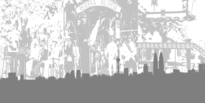Gangga Negara
Gangga Negara is believed to be a lost semi-legendary Hindu kingdom mentioned in the Malay Annals that covered present day Beruas, Dinding and Manjung in the state of Perak, Malaysia with Raja Gangga Shah Johan as one of its kings. Researchers believe that the kingdom was centred at Beruas and it collapsed after an attack by King Rajendra Chola I of Coromandel, South India, between 1025 and 1026. Another Malay annals Hikayat Merong Mahawangsa known as Kedah Annals, Gangga Negara may have been founded by Merong Mahawangsa's son Raja Ganji Sarjuna of Kedah, allegedly a descendant of Alexander the Great or by the Khmer royalties no later than the 2nd century.

Gangga Nagara | |||||||
|---|---|---|---|---|---|---|---|
| 2nd century–1025/1026 | |||||||
| Capital | Beruas | ||||||
| Common languages | Old Malay | ||||||
| Religion | Hindu | ||||||
| Government | Monarchy | ||||||
| Raja | |||||||
| History | |||||||
• Coronation | 2nd century | ||||||
• Defeated by Chola Empire | 1025/1026 | ||||||
| |||||||
| Today part of | |||||||
Origin
Gangga Negara means "a city on the Ganges" in Sanskrit,[1] the name derived from Ganganagar in northwest India where the Kambuja peoples inhabited. The Kambujas are an Indo-Iranian clan of the Indo-European family, originally localised in Pamirs and Badakshan. Commonly known as Hindu traders, they built their colonies in Southeast Asia around 2,000 years ago[2] at the Mekong valley and also at the Malay archipelago in Funan, Chenla, Champa, Khmer, Angkor, Langkasuka, Sailendra, Srivijaya, etc. Historians found the Kambuja traders travelled from Gujarat to Sri Lanka and then to Ligor (Nakhon Sri Thammarat) of the northern Malay peninsular, overland to Thailand and Cambodia.
Beruas
The first research into the Beruas kingdom was conducted by Colonel James Low in 1849 and a century later, by H.G. Quaritch Wales. According to the Museum and Antiquities Department, both researchers agreed that the Gangga Negara kingdom existed between 100 - 1000 CE[3] but could not ascertain the exact site. For years, villagers had unearthed artefacts believed to be from the ancient kingdoms, most of which are at present displayed at the Beruas Museum. Artefacts on display include a 128 kg cannon, swords, kris, coins, tin ingots, pottery from the Ming Dynasty and various eras, and large jars. They can be dated back to the 5th and 6th century.[4] Through these artefacts, it has been postulated that Pengkalan (Ipoh), Kinta Valley, Tanjung Rambutan, Bidor and Sungai Siput were part of the kingdom. Artifacts also suggest that the kingdom's centre might have shifted several times. Gangga Negara was renamed to Beruas after the establishment of Islam there.
Beruas tree
The district of Beruas has found some royal Acehnese gravestones and this evidence has it linked to another historical source that a Samudera Pasai prince from Aceh of Sumatra rested at Beruas tree (Pokok Beruas), his name was Malik. History of Pasai did mentioned a Malik ul Salih who was the first local Hindu Malay king to convert to Islam in 1267. Today the Beruas trees (Garcinia hombroniana) can still be found in the nearby villages of Pengkalan Baru[5] and Batang Kubu.[6]
See also
- Bujang Valley
- Kota Gelanggi
- Champa
- Bhagiratha Bringing the Ganga to Earth
- Indian maritime history
References
- S. Durai Raja Singam Printed by Liang Khoo Printing Co., 1962 -Language Arts & Disciplines -253 pages
- Peter Church, ed. (2012). A Short History of South-East Asia. John Wiley & Sons. ISBN 11-183-5044-8.
- Research on the Early Malay Doctors 1900-1957 Malaya and Singapore, By Faridah Abdul Rashid
- Neutron radiography: proceedings of the second world conference, Paris, France, June 16-20, 1986 John Penrose Barton, Commission of the European Communities, D. Reidel, 1987 -928 pages
- "Nama asalnya Belukar Sambang". Utusan. 18 June 2016. Retrieved 24 January 2019.
- Othman bin Mohd. Yatim; Hassan Shuhaimi bin Nik Abd. Rahman (Nik.); Abd. Hamid Zamburi; Zainol Haji Hussin; Abd. Latib Ariffin (1994). Beruas: kerajaan Melayu kuno di Perak. Persatuan Muzium Malaysia, Muzium Negara. p. 3. OCLC 34548687.CS1 maint: multiple names: authors list (link)
External links
- https://web.archive.org/web/20060623075820/http://www.sabrizain.demon.co.uk/malaya/hindu.htm
- https://web.archive.org/web/20060907055209/http://muzium.perak.gov.my/m_br_bahan.html Beruas Museum
- National Library of Malaysia. Sejarah Malaysia. URL accessed 14 April 2006.
- Laman Rasmi Muzium-Muzium Negeri Perak. URL accessed 14 April 2006.

